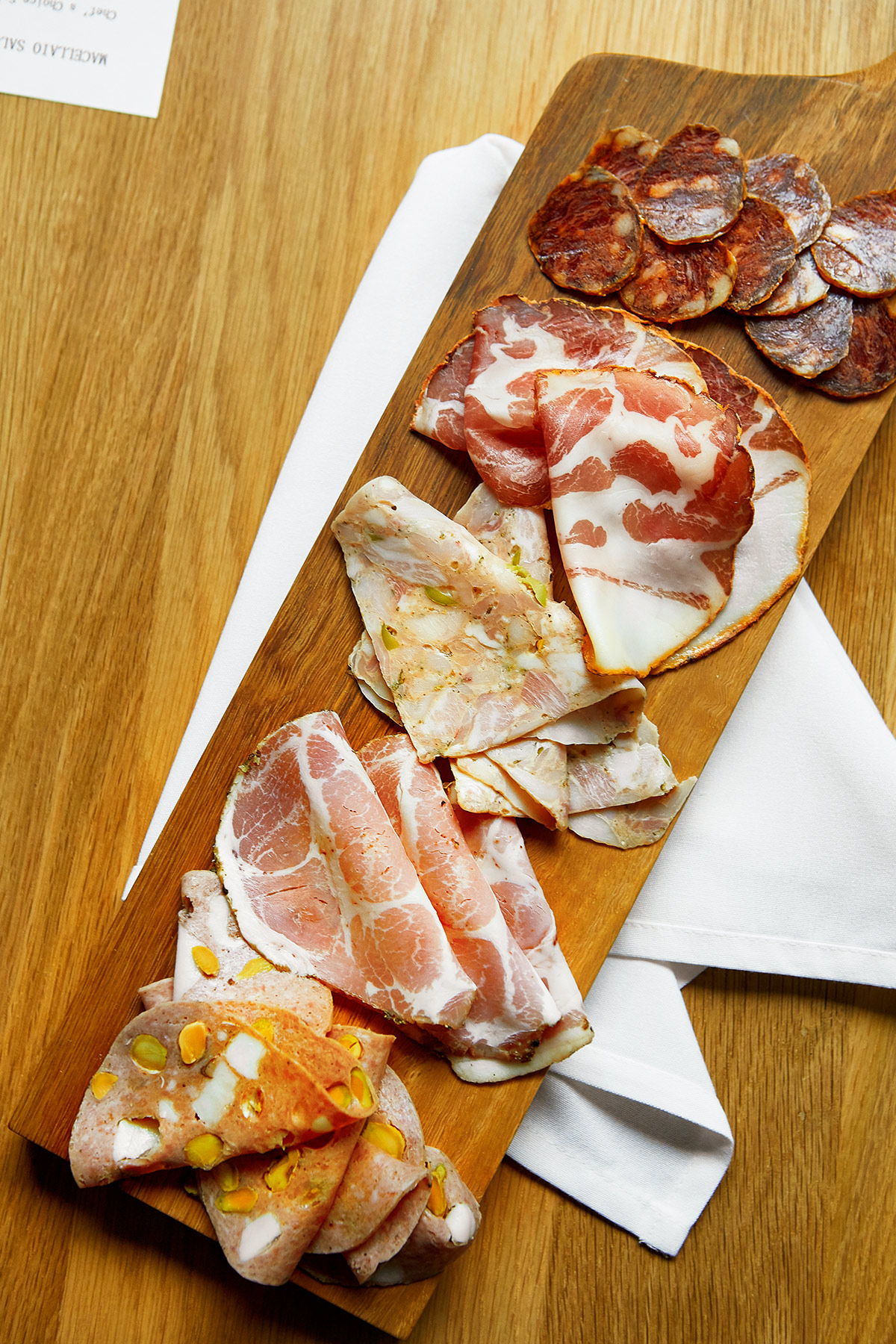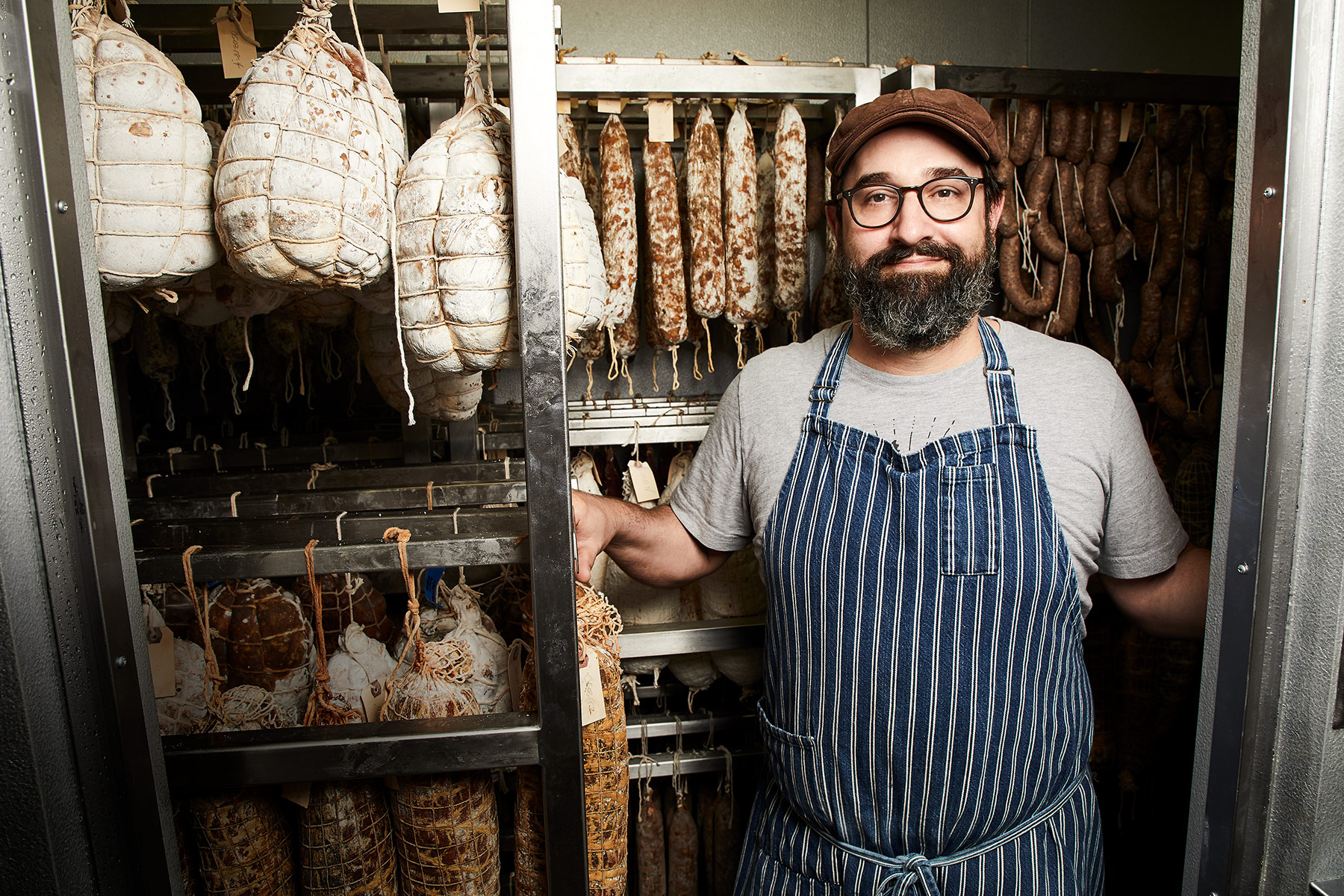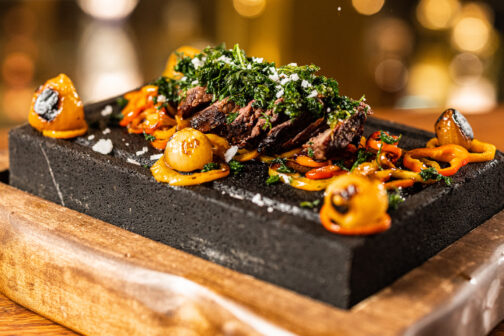Lucia chef David Uygur’s resume attests to his mastery of Italian cooking: two beloved Bishop Arts restaurants (including now-closed Macellaio), five James Beard Award nods, and a long list of local honors. Lucia reservations book weeks in advance.
But Italian food wasn’t in Uygur’s East Texas upbringing. As the son of a Turkish father and an American mother, he grew up around homemade baklava and tasted Turkish basturma long before trying its western relative, pastrami.
Since my ancestry tells almost the same story—my father is American and my mother immigrated from Istanbul as an adult—I thought it would be fun to ask Uygur how his Turkish roots have affected his cooking at Lucia and Macellaio. We compared notes on our families’ favorite foods, too.
(This interview has been edited for brevity and clarity.)
How did your father come to the United States?
My dad was actually born on Crete [in Greece]. When Turkey and Greece were fighting with each other, his family had to leave Crete to go to the Turkish coast and all the Greek people who were on the Turkish coast had to go back to Greece.
They had to do a little bit of a thief in the night kind of thing [to escape]. He got to make up his own last name as a kid. His siblings had different last names that they made up. He was learning how to speak English and he was looking at National Geographic to learn English, and he saw the word Uygur. I am not in any way part of the Uygur people, other than National Geographic. I don’t even know what his original last name was. Kinda wacky. I just love that it came from him trying to learn English by reading National Geographic magazines. Something must have seemed romantic to him about being a nomad. Or maybe it was something he picked up at random.
He became a journalist. He wrote for the Associated Press but he also wrote for Hürriyet. [One of Turkey’s largest newspapers, Hürriyet was known for liberal, secular views until a conservative family purchased it in 2018. -B.R.] My dad tended less toward political things, at least when I was around. I think he did some war correspondent stuff when he was much younger, but truth be told I don’t have any of that.
It was always kind of random what he was doing. I remember at one point he interviewed H.L. Hunt. At the time, H.L. Hunt gave two interviews. One of them was my dad and the other was Playboy. We would go around and he would interview B-list celebrities. I went around with him. William Shatner. Chuck Norris, pre-Walker, Texas Ranger.
John Wayne was the most famous person. I don’t remember being there, I just remember he was the biggest person physically that I had ever seen in my life at the time. He smelled like booze and cigarettes and wanted to pick up the little boy, and I ran away from him. At least, so the story goes.
What kind of food did you grow up with?
I grew up in East Texas. I’ve actually never been to Turkey. For a long time, there was the whole mandatory conscription thing. [Turkey requires male citizens under age 41 to serve in the military. Uygur and I are technically citizens by birth, but neither of us has ever claimed citizenship. -B.R.]

My dad cooked a decent amount, but it was more special occasion and less day-to-day. The things that I remember really liking, whenever we got lamb he would make a shish kebab grillout, or he would make kofte. A lot of it was just raw vegetable salads in the summer. Tomatoes and onions.
He would make börek and baklava. Everybody always seemed to like his baklava, but I thought it was too sweet. I always found the process of making it fascinating. I liked when you pull it out of the oven and pour over the syrup when it’s really hot and it kind of foamed up. He would make breads sometimes, too. He made flatbreads. He made börek.
That was my favorite, börek. Especially the kind filled with feta and lots of herbs.
Me too. His primary thing was spinach and cheese, and I liked that.
My parents got divorced when I was 13 and my dad passed away when I was 17. So all of this was a long time ago and the memories aren’t immediate. But one of the things that my father did was he would help people get visas, get jobs and stuff. Occasionally we would go to Dallas or New Orleans or Houston and visit some of the other Turkish families. So there was some celebration food. I went to a Turkish wedding once. Loud. Lots of food. Lots of food. A preposterous amount of food.
I imagine East Texas would have been hard for him. In southern Indiana, we used to drive 75 miles round trip to the one grocery that had decent olives and feta cheese.
Longview, there was nothing. So that was something that we would combine with a trip to an actual city. In Dallas at the time, Jimmy’s had some stuff, but there was a place called Al’s, a Middle Eastern market with big barrels of olives and feta in brine. We would stock up. We would fill up the freezer with all the phyllo he could possibly manage.
The Turkish influences were a lot more apparent at Macellaio, because I feel like I need to sneak it in a little bit more at Lucia.
David Uygur
For us to get lamb in Longview in the late ’70s, early ’80s, you had to preorder, you had to order it and wait a week. You used to get the standard butcher pack of a leg of lamb with a pack of mint jelly. I never ate mint jelly with lamb, it seemed kind of weird, but we did have mint in the house. My dad would pick the mint and dry it out on sheet pans.
When you started cooking professionally and training, was Turkish food something you thought about?
I did, but I didn’t really think about it as something I could focus on. It was still first generation. Whereas with Italian and French, you have a lot more room to figure out what you want to do within those food cultures in the United States. In culinary school, things that were not French, Italian, a little bit of Spanish, they didn’t really exist. We did a day on Japanese food. One day.
I always enjoyed Turkish food. It was something that I would seek out whenever I moved to a new city. But it wasn’t something that seemed like I could build a career on.
I’ve definitely seen Middle Eastern influences pop up on the menus at Lucia and especially Macellaio. Like the cured meat board at Macellaio had basturma.
That was probably the first cured meat that I ever ate. When I started figuring out how to cure meats, that was one of the ones that popped up, when I thought, “could I make that?”
I’ve made it multiple times over the years. We’ve snuck it onto the salumi board, trying it with different cuts. The most interesting one, I thought, was the beef tongue. Is it like the package that’s been sitting pre-sliced in the freezer section? Definitely not. The [commercial] spice coating is always really, really thick, and I know that’s a function of how it’s served and how it’s made, but that wasn’t my thing. I wanted a thinner coating. The texture of that always seemed kinda weird and pasty. I tried to make the flavors a little bit more of what I like. We’ve also done sujuk, but I made it with pork, dry-cured, a fully dried sausage. Definitely not traditional.
The Turkish influences were a lot more apparent at Macellaio, because I feel like I need to sneak it in a little bit more at Lucia. We made a dolma variation at Macellaio with swiss chard instead of grape leaves, and instead of rice we used farro verde for texture. More and more now I feel like, hey, we’ve been around a while, I can do what I want.
The good news is your regulars are so loyal. They would follow you almost anywhere you wanted to go.
We get a lot of trust as far as people trying dishes. I’m lucky. That is something we worked on over the years.
During the first part of the pandemic, everybody was stuck at home and I did try making lahmacun. That was a fun thing to try at home. That’s something that I’d love to explore in some way or another, even if it’s making more at home or making it for staff meal.
Lahmacun would be a perfect thing to introduce to Americans. It worked on us kids when Mom would say, “Hey, let’s get Turkish pizza!” Everyone loves pizza.
You get to put fresh herbs on it, raw onion, and it’s pizza that you kinda eat like a sandwich. There’s more crispy than any [other texture]. I enjoyed that. That was fun.
I don’t do a ton of cooking at home that’s like that, but to say that I don’t have a whole bunch of stuff that’s influenced by it would be wrong. I use the flavors frequently.
Get the SideDish Newsletter
Author






